This crazy-looking but delicious fruit might seem complicated to figure out at first. Not to worry, though - here's how to cut dragon fruit like an expert.
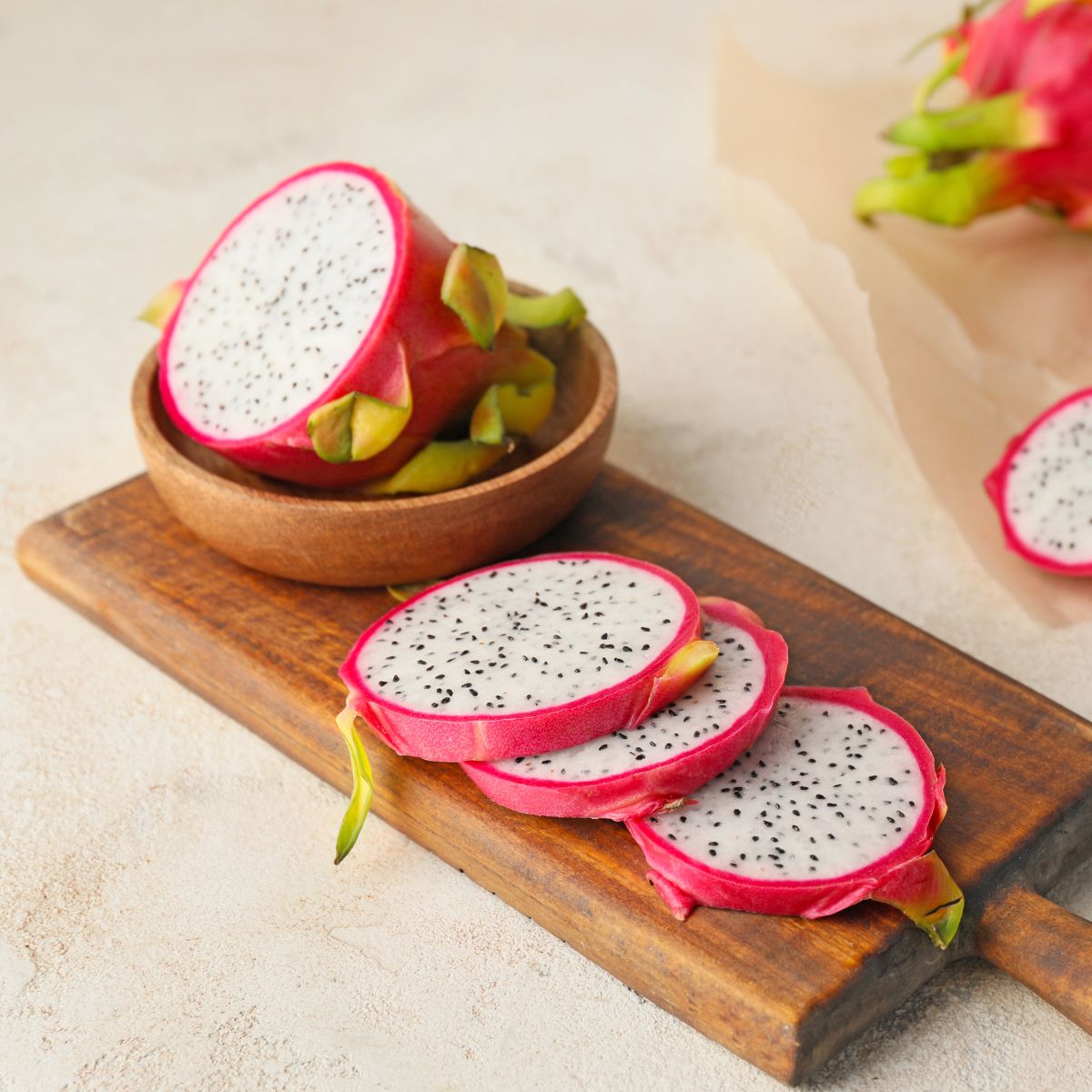
Selecting the Right Dragon Fruit
Shopping for these fruits can seem tricky. The good news is that we have insider knowledge to help you find the perfect one! We'll break down what to look for, from the funky colors to the skin's texture.
Types of Dragon Fruit
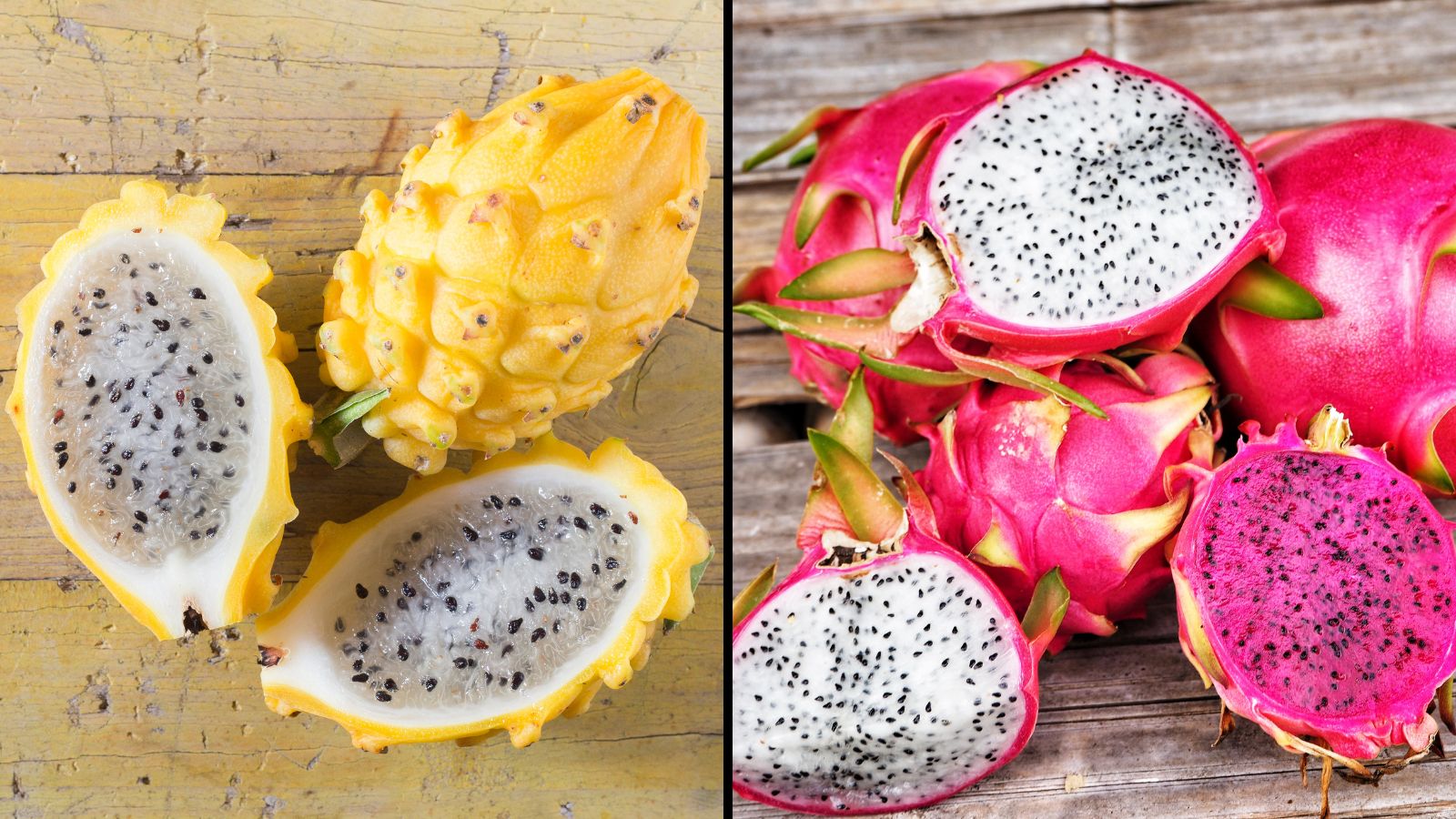
Dragon fruit, also known as pitaya, belongs to the cactus family and thrives in warm climates. There are three primary types of dragon fruit, each unique in appearance and flavor.
The White Dragon Fruit (Hylocereus undatus) is the most common, known for its striking pink or red skin and white flesh dotted with black seeds. It offers a subtly sweet flavor and is known for its refreshing quality.
The Red Dragon Fruit (Hylocereus costaricensis), with its vivid red skin and flesh, is noted for being sweeter and juicier than the white variety.
Lastly, the Yellow Dragon Fruit (Selenicereus megalanthus) stands out with its yellow skin and white interior.
Smaller in size, it is often considered the sweetest among the varieties, making it a popular choice for those who enjoy a fruitier taste.
Appearance
Finding just the right dragon fruit is all about judging its appearance. Ripe ones have vibrant, consistently-colored skin with no sagging spots or wrinkles. You want the thick rind to be smooth, no matter what combo of gorgeous bright colors and leaves yours has.
Keep an eye out for lush tones and a glossy glow - those are signs you've got a tasty one. The yellow kind especially needs this once-over. Their hue hints at how yummy the inside will be! Steer clear of any sad-looking, wrinkled guys - those are overripe.
Ripeness
Beyond just the skin's looks, feel is a big clue if dragon fruit is truly great to eat. A ripe one should gently yield a little under your fingers like a perfect avocado. Too firm still means you might have to wait several days for it to finish ripening.
Avoid ones with brown blotches and loose, papery skin, which is a must, like how you'd avoid a bruised, icky banana. Even color and some softness when you squeeze it signals prime picking potential! Keep those tips in mind for maximum sweetness later on.
Storage
Finding an awesome dragon fruit doesn't end the freshness battle! Stash whole fruit in plastic produce bags while chilling in the fridge for 3 to 5 days.
Sliced pieces will last 1 to 3 chilled days in a sealed container - sprinkle lemon juice on those to lock in that sweet taste. And if you want to save dragon fruit out of season, you can freeze wedges for ages!
Preparing to Cut
Let's make sure we get everything ready before slicing this tropical fruit open. Washing the dragon fruit and having the right tools make the best-looking cuts.
Wash the Fruit
Okay, we don't eat the thick rind, but washing removes dirt that might touch the insides. Just give the skin a good scrub under cool water and some mild soap - it keeps it fresh. Then we'll grab our gear and get chopping!
Gather Tools
With a chill, clean fruit, it's time to grab our slicing tools! Grab a sharp knife that feels easy to control. Place it on a cutting board that feels stable for you. You'll also need a big spoon to scoop out the good stuff later. Other than that, no fancy gadgets are required! Just make sure your arsenal is clean.
Cutting The Dragon Fruit
Alright, now comes the best part - cutting the dragon fruit!
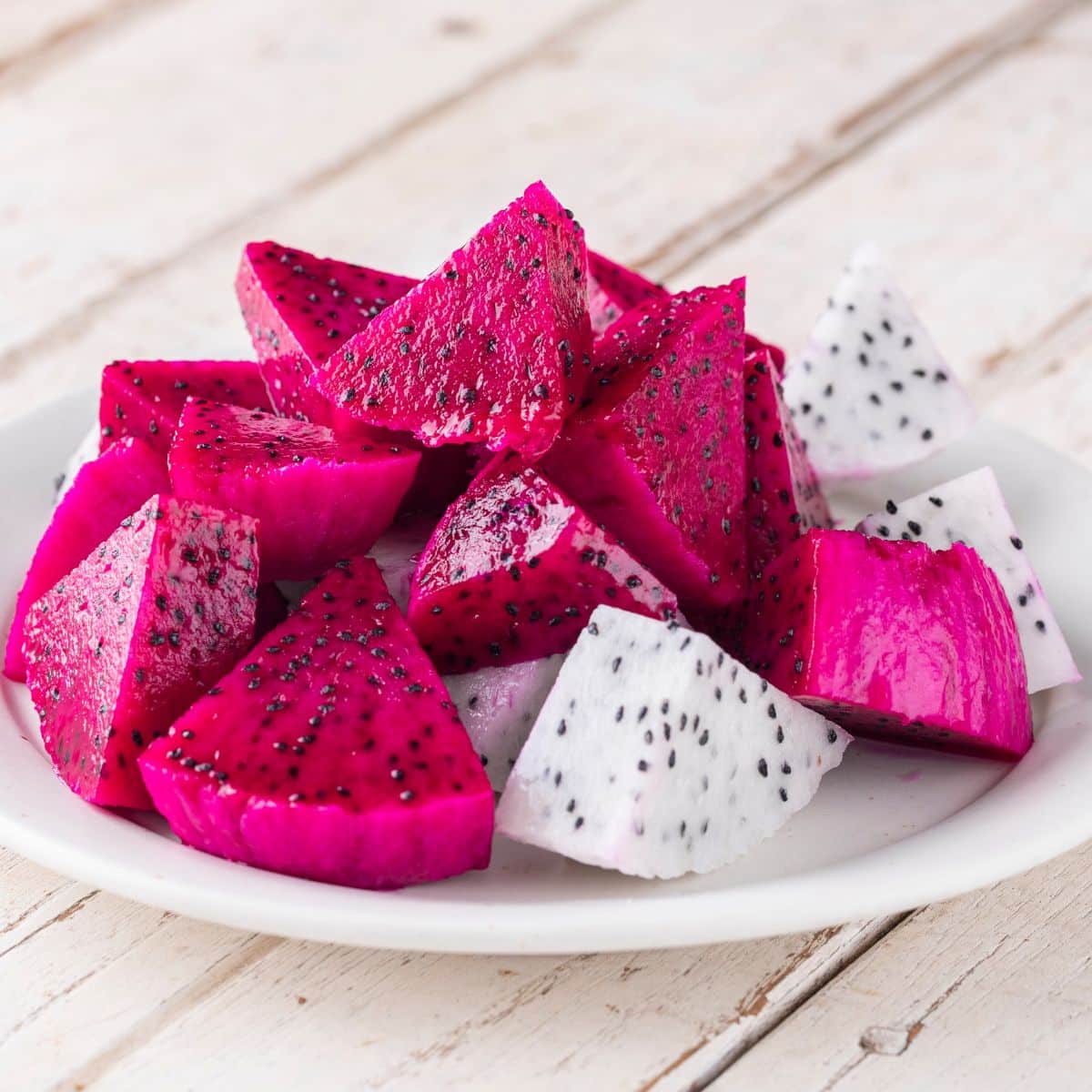
Slice the Dragon Fruit
- Begin by positioning the dragon fruit on a stable cutting surface, ensuring it doesn't roll.
- Take a sharp knife, a paring knife, or a small chef's knife for better control.
- Carefully slice off the top of the dragon fruit, where the stem is. This cut should be about half an inch deep, just enough to remove the stem part and a small portion of the fruit.
- Repeat the process on the bottom end of the dragon fruit, creating a flat base. This step helps in stabilizing the fruit for the next part of peeling.
- Once both ends are trimmed, cut the fruit in half.
Dividing the fruit into two halves simplifies the peeling process, as it reduces the fruit's size, making it more manageable and allowing for a better grip. This method is particularly helpful for those who find handling the whole fruit challenging due to its size or slipperiness.
Peeling the Skin
Method 1: Peeling Using Your Hands
- Gently insert your thumb under the skin where you cut.
- Carefully lift the skin away from the flesh. The ripe dragon fruit’s skin should peel back relatively quickly.
- Continue peeling the skin off around the entire fruit, working your way around in a spiral or from top to bottom.
- Likely, the fruit is only fully ripe if the skin peels easily.
Method 2: Removing the Dragon Fruit Using a Spoon
- Slide the spoon between the skin and the flesh. The spoon should be large enough to cover the curve of the fruit.
- Gently work the spoon around the edges, separating the skin from the flesh
- Move in a downward motion, following the contours of the fruit.
- Rotate the fruit as you go, using the spoon to lift the skin away from the flesh.
I like to peel dragon fruit with my hands because it's easier to control, and I don't waste any fruit.
Cutting the Peeled Fruit
Choose Your Cutting Style
Decide on the final shape you want for your dragon fruit - cubes, slices, wedges, or any other form.
Stabilizing the Fruit
- Place the peeled dragon fruit on a clean, flat cutting board.
- Ensure that the fruit is stable. If it rolls or slides, you can slice a thin piece off the bottom to create a flat, stable base.
Making the Cuts
Cubes:
- First, slice the dragon fruit in half lengthwise.
- Lay each half flat on the cutting board and slice them into even strips.
- Then, turn the strips 90 degrees and cut across them to create cubes.
- For smaller cubes, make more frequent cuts.
Slices:
- Simply cut the dragon fruit into round slices, starting from one end and working your way to the other.
- Adjust the thickness of the slices according to your preference.
Wedges:
- Cut the dragon fruit in half lengthwise.
- Cut each half into wedge-shaped pieces. The number of wedges will depend on how large you want them to be.
Precision and Uniformity
Aim for uniformity in your cuts for even cooking or presentation if that's important for your recipe or serving style.
Use a sharp knife to ensure clean cuts. A dull knife might mash the fruit or make uneven slices.
Ready for Use:
Once cut, the dragon fruit is ready to be used in your dish or eaten as is!
If not using immediately, store the peeled and cut dragon fruit in an airtight container in the refrigerator.
Serve as desired, either as a standalone fruit or as part of a dish.
Best Ways To Serve Dragon Fruit
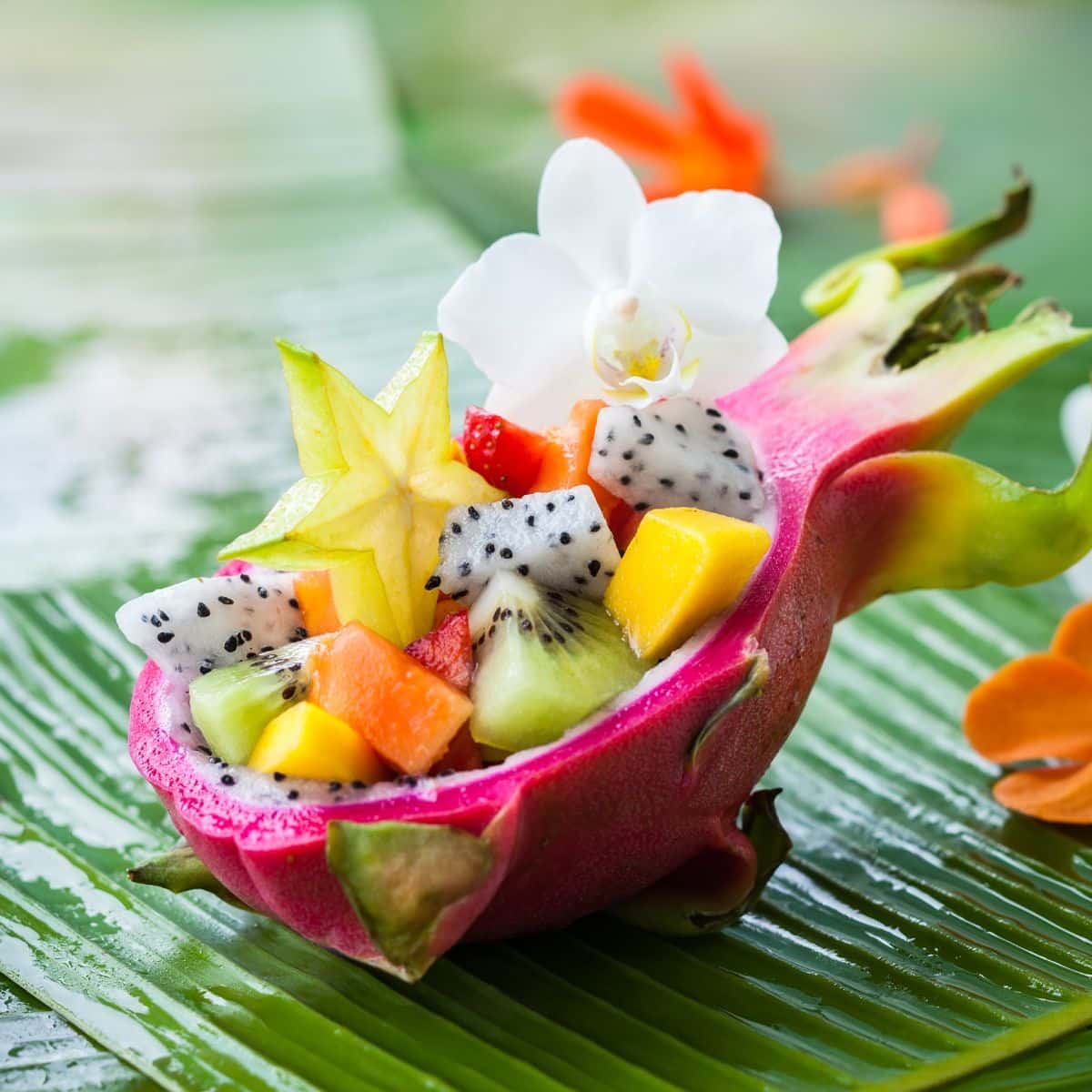
We love to make dragon fruit look as exciting as it tastes. Adding thin slices of dragon fruit to a salad brings out a pop of color and sweet flavor. It also makes for a perfect snack – just slice it up and enjoy the bursts of juicy sweetness with every bite.
You can make breakfast more fun by tossing cubed dragon fruit into yogurt or smoothie bowls.
Dragon fruit chunks are great frozen, too; they cool down drinks and add a hint of tropical taste.
If you're feeling fancy, use a melon baller to scoop out little balls for an eye-catching treat on any fruit platter!
Tips for Enjoying Dragon Fruit
Now that you know how to serve dragon fruit, let's examine how to make the most of its taste and texture. Eat it fresh from the fridge for a cool treat, as cold temperatures bring out its sweetness.
Mix it into salads or pair it with Greek yogurt for a burst of flavor or even a fruit smoothie. The tiny black seeds give a pleasant crunch, much like kiwi fruit.
You can toss cut pieces into a blender for a refreshing dragon fruit smoothie. Adding other fruits will highlight the dragon fruit’s subtle taste.
If you're up for an adventure, sprinkle some chili powder on top; it may sound strange, but many people love this combination! Keep exploring different ways to enjoy this vibrant fruit and surprise your taste buds every time.
How to Store Dragon Fruit
Keeping dragon fruit fresh is easy. We can leave it on the kitchen counter, which will stay good for a week or two. But if we cut into that juicy fruit, there's just a couple of days to enjoy its best taste before it spoils.
So, what do we do after cutting it? We put those vibrant pink or white pieces in a sealed container and tucked them in the fridge. They're fine like that for about two days.
If our dragon fruit sits around longer, up to 5 days in the fridge is okay if it doesn’t turn brown or get mushy - then it’s time to toss it out.
Before storing any cut pieces, let’s ensure they are dry. Gently pat them with a paper towel; this helps keep them from getting wet and spoiled too fast. And here's a trick: sprinkle on some lemon juice - it acts like magic to slow down spoiling!
Nutritional Benefits of Dragon Fruit
Dragon fruit is like a treasure chest of good stuff for our bodies. This exotic fruit from South America and Southeast Asia has many health benefits. It's full of antioxidants that help fight off harmful free radicals.
These include flavonoids, phenolic acid, and betacyanin, which are all great for keeping us healthy.
We also love dragon fruit because it doesn't have any fat, and it's rich in fiber – this means it can help your stomach feel good and may even keep your heart healthy by lowering bad cholesterol.
Plus, with vitamin C coming along, your immune system gets the support it needs to work its best. And if that wasn't enough, lycopene hangs out there, too; it's known to look after your heart like a superhero.
So when we slice into this vibrant-colored treat, we're not just making our plates prettier; we're giving our bodies lots of helpful things they need to stay strong and happy.
FAQs
What is dragon fruit, and where does it come from?
Originally from Central America, dragon fruit has found its way into the agricultural landscapes of Southeast Asia, particularly in countries like Vietnam, Thailand, and the Philippines, where it has become a key crop. The fruit has also gained popularity in the United States, especially in warmer states such as California and Florida.
Dragon fruit plants are unique as they belong to the 'night blooming Cereus' cactus species, which flower only at night. The harvesting season peaks in the summer when the fruit changes from green to its ripe, vibrant hues. The dragon fruit's exotic look and nutritional benefits have contributed to its growing demand worldwide, making it a sought-after fruit in various regions.
Are there different types of dragon fruit?
Dragon fruit, or pitaya, comes in three main types. The White Dragon Fruit has pink or red skin with white flesh and black seeds and is known for its subtle sweetness and refreshing taste. The Red Dragon Fruit features red skin and flesh and is sweeter and juicier than the white variety. The Yellow Dragon Fruit has yellow skin and white flesh and is the smallest but often the sweetest of the three, favored for its intense fruity flavor. Each type varies in appearance, taste, and sweetness, catering to different tastes.
How do I know when a dragon fruit is ready to eat?
To determine if a dragon fruit is ripe, gently press the skin with your finger. It should be colorful and give in slightly under pressure, similar to a ripe avocado or peach. An underripe dragon fruit will feel firm, while an overripe one might be too mushy and smell sour. Perfectly ripe dragon fruit will have reached its peak flavor and sweetness, making it the best time to eat it!
What's the easiest way to cut a dragon fruit?
The most straightforward step-by-step guide to cutting one open involves slicing through the center using a chef knife or utility knife, then scooping out the edible sweet flesh with a spoon or cutting it into cubes.
Can I eat all parts of a dragon fruit?
You can enjoy eating the inside part of any dragon fruit! The skin isn't tasty, though - we don't eat that!
How can I use cut-up pieces of dragon fruit?
Cut-up bits work great in many favorite recipes like salads or ice cream for an excellent choice addition that adds taste and beautiful color. Feel free to add it to other dishes.
Enjoy Other Exotic Fruits
Now that you're well-versed in selecting, cutting, and enjoying dragon fruit, you might be interested in exploring other exotic fruits and their preparation methods. For instance, learning how to cut papaya, a fruit with unique nutritional benefits and culinary uses, can be another exciting addition to your culinary skills.
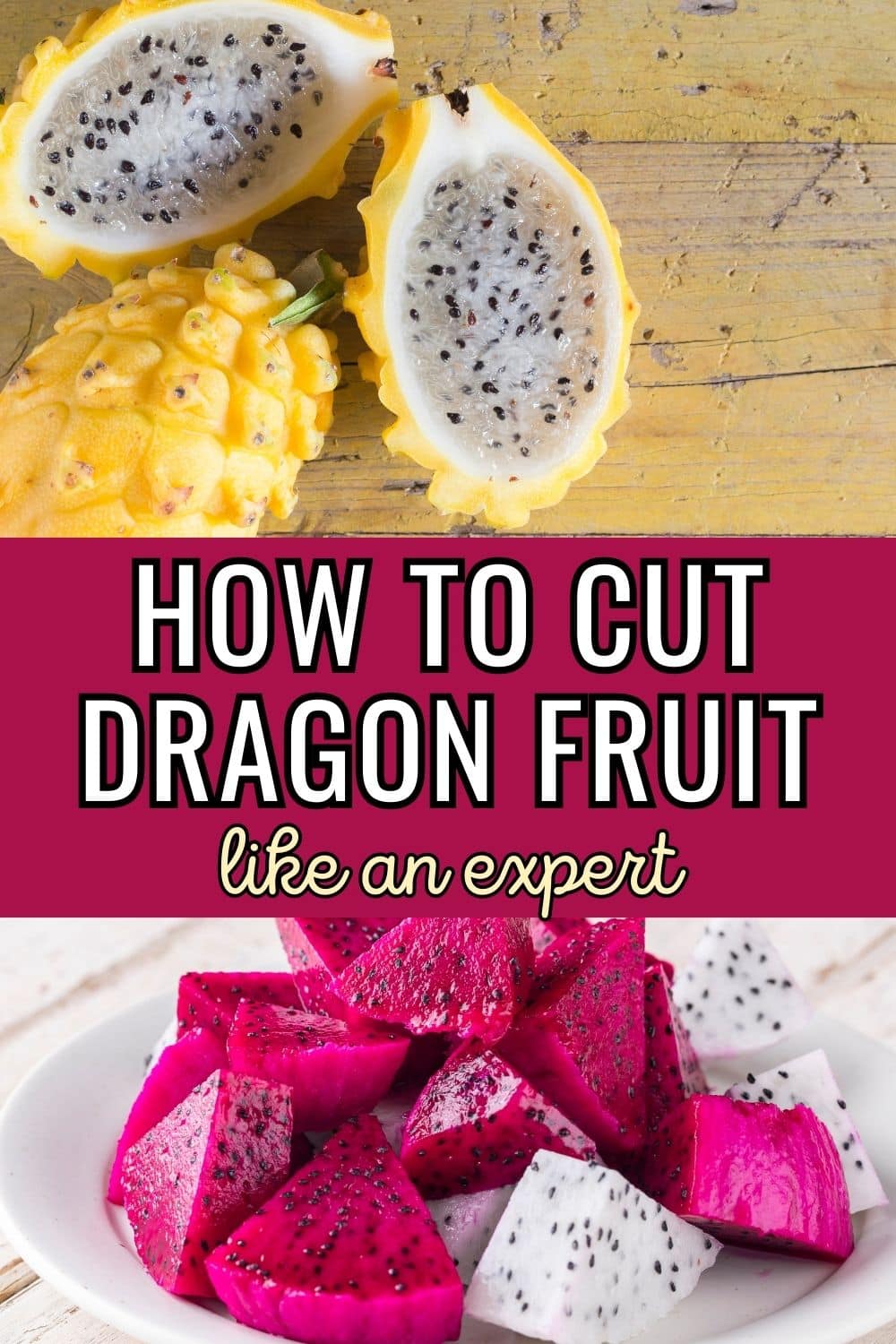
This article originally appeared on Pink When.
Latif Jamani
Latif Jamani is the owner of Simply Healthy Family and an entrepreneur based in Calgary, Alberta, Canada. He has traveled to over 35 countries. Quite simply, Latif loves food, traveling, and seeking out new experiences. A secret that no one knows is that Latif used to (occasionally) skip class at university to stay home and watch the “food network.” This exposed Latif to many different techniques and types of food. His favorite hosts are Jamie Oliver, Giada, Barefoot Contessa, Gordon Ramsey, just to name a few.
